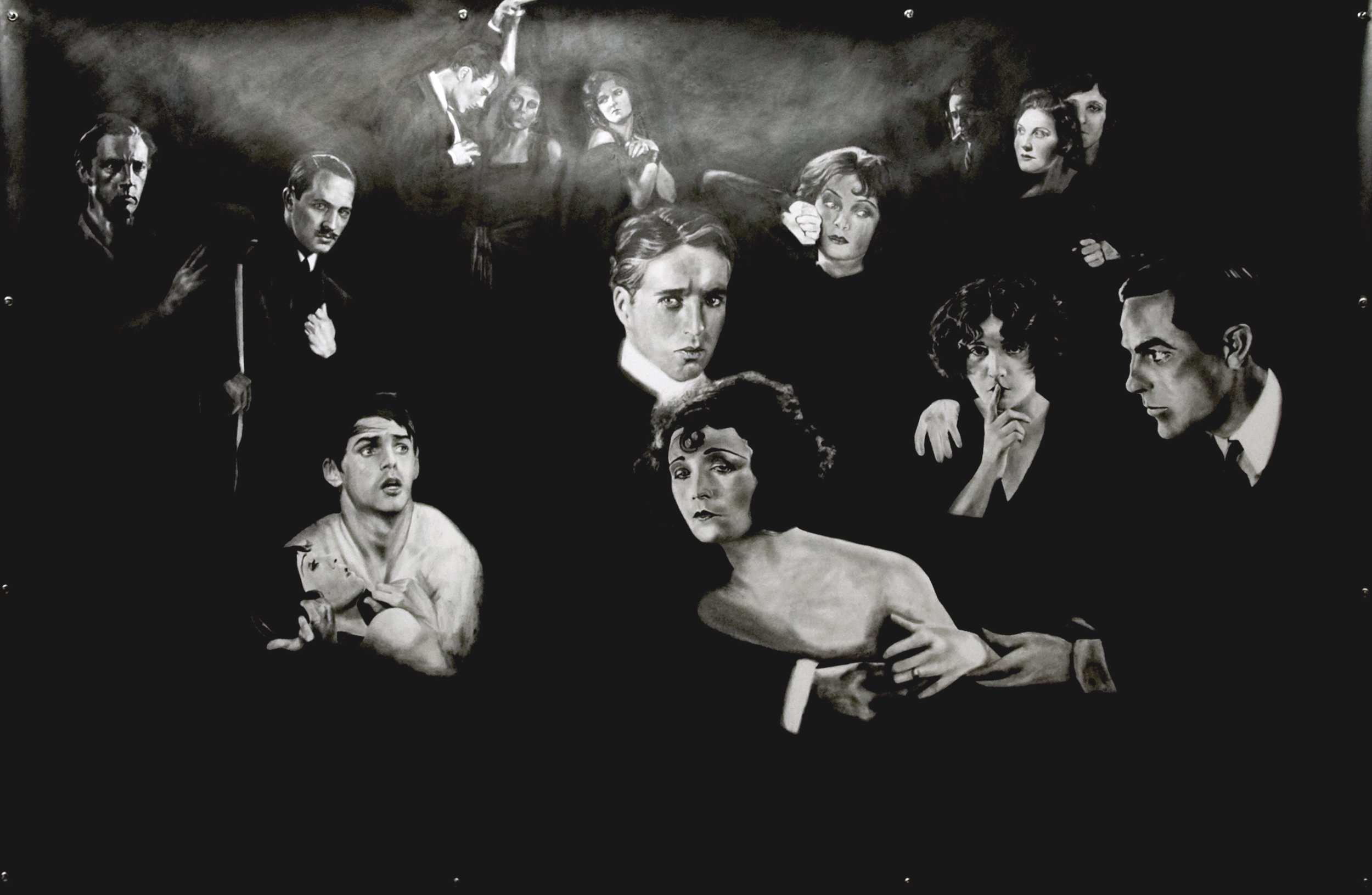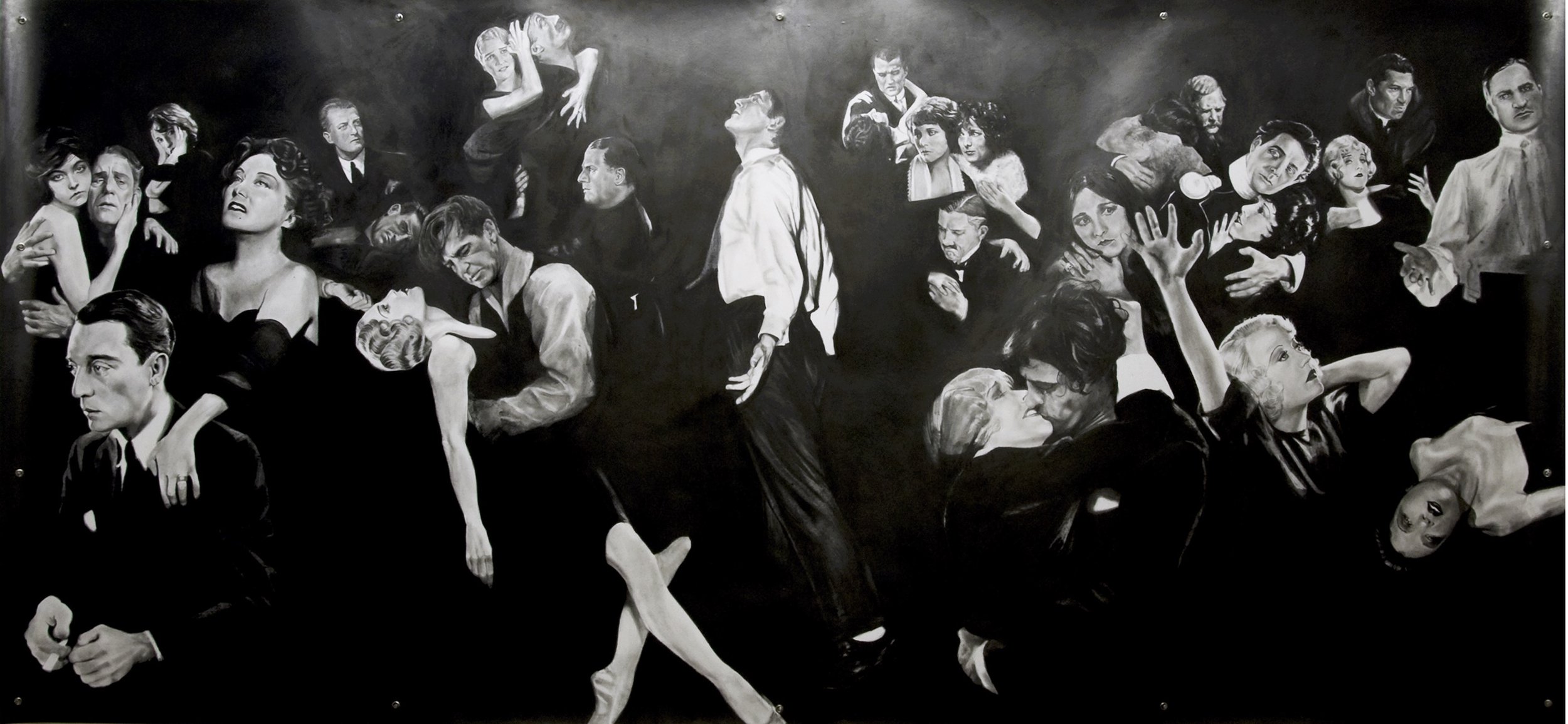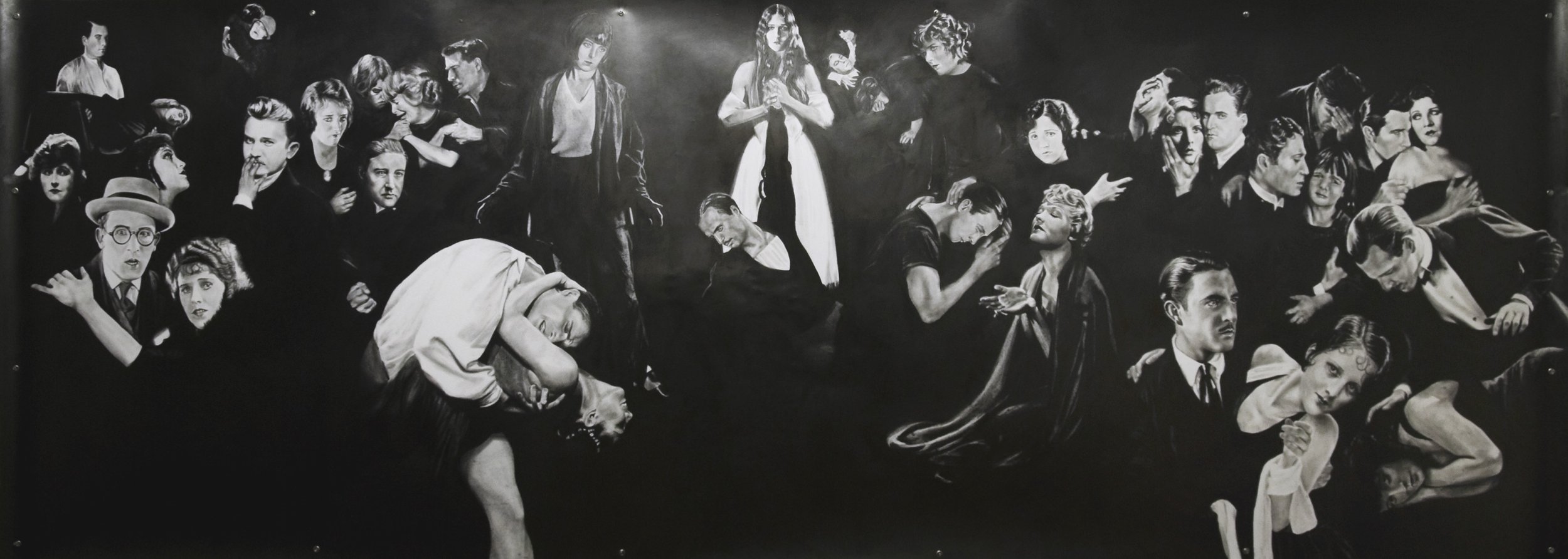Valentinos Funeral
John Maybury
Artist and Film Director
Featured in Measuring Elvis, 2015
I’ve long admired the work of Nina Fowler both as a technician and, although it might seem a strange choice of phrase, as a conceptual artist. Her technical facility could position her work at the center of the academic tradition but it seems to me that her choices and the application of technique site her work in a much more contradictory experimental locus. The portrayal of iconic faces of twentieth century ‘pop’ culture is nothing new in the fine arts — obviously Warhol looms large but more recently, from Elizabeth Peyton via the various so-called YBA’s to the Italian Francesco Vezzoli, famous and infamous faces from mass media pantheons of celebrity are scattered through the contemporary art world. However, with Fowler the bar is raised. The virtually autistic application of detail in execution is applied to an archeological approach to famous faces from the past. This bizarre, even exotic, approach has become most potent in the ambitious installation Valentino’s Funeral.
As a filmmaker I have long been obsessed with silent cinema — a secret passion — and while living in Hollywood I began collecting books and ephemera relating to the early decades of cinema. In Los Angeles I was able to tread lightly in the footprints of the ghosts of that era. A friend in Laurel Canyon would drive me in his Rolls Royce Silver Shadow to visit the surviving mansions of the silent stars and their directors on the silver screen — at both Forest Lawn and the Hollywood Cemetery, now known as Hollywood Forever. It is at the latter that the modest resting place of Rudolf Valentino can be found.
Anyway, I digress. Back in London, Nina came to visit me at my place in Covent Garden and told me about her proposed project on Rudy’s last big appearance. I was able to lend her some books from my collection, yet she seemed pretty advanced already in the direction of the piece.
Cut to:
In our celebrity-obsessed age one of the fascinations of this impressive piece is the most obvious – there’s nothing new. Yet when Michael Jackson died the global outcry had nothing of the tsunami of grief that greeted the departure of Valentino — pre-internet, pre-television. The ‘Latin Lover’s’ untimely death provoked suicides in London and Paris — bellhops and schoolgirls - housewives and politicians were distraught. Anyway, that was then.
The installation - the drawings in particular - bring that bizarre phenomenon of movie Gods and Goddesses back to us now in sharp focus. The elegiac rendering of the mourners, in graphite, possess an extraordinarily cinematic quality. As collage — montage — whatever — the evocation is pure poetry. The beauty of the black and white rendering of each portrait emerging from the inky black of the surround recalling film posters and yet somehow the darkness of grief itself. The strange obsessive theatre of silent mime is frozen in time. I know I’m gushing here — (I think Kenneth ‘Hollywood Babylon’ Anger would too) but there’s the substance of noir poetry at play in these images. As another silent star playing a silent star, Gloria Swanson, said as Norma Desmond — “They don’t make faces like that anymore” — she also said (or Billy Wilder did) “I am big, it’s the pictures that got small”. Well Nina Fowler’s piece has restored some of that original scale to those faces — and in it’s elegant melancholy Valentino’s Funeral emulates some of the grandeur and brilliance of that era and serves as an exquisite commentary on the smallness of today’s stars. By contrast and comparison, the brash facile technicolor blur of today looks limp and muted. The silver screen in vivid black and white was never more luminous — and as tribute and memorial — more dignified and beautiful — the tomb which Valentino truly deserves.


